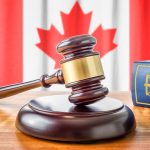EXTREME DANGER, DANGER, WARNING, CAUTION! Signal Word Requirements in Canada and the US
By: Kirsten Alcock, Manager of Product Safety, email
Signal words play a very big role in our lives from us crossing the street and reading the warning words on the crosswalk sign to product labeling. The signal word can have an impact on how we use the product. If we see the signal word of DANGER, this tells us that we should take care in using a product more than the word CAUTION or WARNING. But what are the requirements and when do we use certain wording in chemical legislation?
Today I’ll be talking about non-registered products and their requirements for signal words in the workplace as well as the consumer realm in Canada and the US.
Let’s look at the workplace first. Both Canada and the US have adopted the GHS System of classification and Labeling. This GHS system of classification comes with only two signal words: Danger and Warning. The use of the signal word will depend on the hazard category for that particular classification.
As you can see in this above example, the signal word Danger and Warning are used depending on the Hazard Category for the GHS. It’s simple and to the point. If you need the hazard criteria listed in the regulations for 1 or 2, you automatically receive the signal word Danger. You move to the signal word Warning when you meet the hazard category 3. Please note though that the change in signal word from Danger to Warning is not matched to the hazard category.
Here is another example but for a health hazard classification for skin irritation. As we can see here, hazard category 2 uses the signal word Warning for a category 2 whereas in the previous example hazard category 2 for flammability still uses the signal word Danger. Be sure to look at the chart to determine the appropriate signal word for your product.
When we look at the Consumer Chemicals and Containers Regulations (CCCR) regulations for Canada however, we have the option of EXTREME DANGER, DANGER or CAUTION. The use of the signal word WARNING is not there. This can cause some confusion when you jump between regulations. If my product was given the word warning under GHS, what would it be given under the CCCR?
Here again is an example from the current CCCR regulations showing how it is presented to us.
Lastly, let’s discuss the US Consumer Product Safety Commission (CPSC) regulations. In the US Consumer Regulations, we have three options: DANGER, WARNING, or CAUTION. The US regulations indicate when the word danger must be used but then indicates that the signal word WARNING or CAUTION are to be used for other hazardous substances. There is no further guidance on this and it is completely up to the user to pick the signal word they most feel appropriate for their product.
As I demonstrated above, the regulations are very different for workplace versus consumer and also different for Canada versus the US when it comes to consumer regulations. If you need help in determining what your requirements are for retail or workplace, please contact us. We are happy to provide further guidance on the regulations and what the appropriate signal word and associated phrases are for your particular classification. Don’t hesitate and contact us today.
Contact:
Dell Tech
Kirsten Alcock, B.Sc. (Hons)
Manager, Product Safety Group
519-858-5074
kirsten@delltech.com
Dell Tech has provided professional, confidential consulting services to the chemical specialty
industry in Canada, the USA, Europe, and Asia for the last 40 years.
Contact us today for more information.
www.delltech.com









